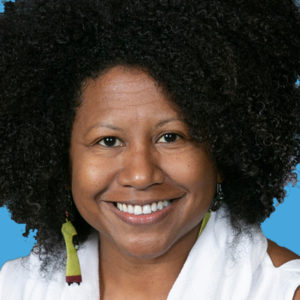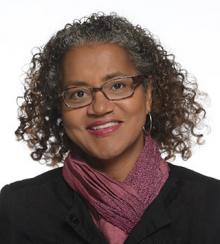By Sophia Costa
The world has been sitting back and watching as some of the most unthinkable natural disasters have occurred in the year 2020. In addition to historic global pandemics, the U.S. alone suffered from intensive hurricanes throughout the Gulf of Mexico, mass fires in the western parts of the U.S., devastating earthquakes in Puerto Rico, and large tornadoes in Arkansas and Tennessee. Many wonder, how do we combat this changing climate? Scientists worry that if humanity continues using natural resources at the rate and scale people currently do, natural disasters will only increase in magnitude and frequency. Therefore, it is critical that populations begin to correct the wrongs of the past in order to prevent the exponential impacts of global climate change. To do so there must be global, system-wide thinking to transition into a more sustainable future.
The Strong Coasts program brings together graduate students in environmental engineering, anthropology, and marine science to begin working together in systems-based thinking. This transdisciplinary program provides space for individuals of different specialties to work together with the goal of creating a more sustainable future. That journey includes a class taught by the program director, Dr. Maya Trotz, called “ENVISION Sustainable Communities.”

Dr. Maya Trotz, Professor, Civil & Environmental Engineering, Director, Strong Coasts
As a marine scientist living in the U.S. Virgin Islands, I was a bit nervous at first taking my first class in the program in the engineering department. Having never taken an engineering class in my life, I thought I would have to rely on my interdisciplinary skills I learned in undergrad to get through this class. However, after the first week of class I understood that although this course was an engineering class, the complexity of infrastructure reaches much further than one department. “ENVISION Sustainable Communities” is an introduction to the necessity for transdisciplinary work in system-based thought.
The course teaches undergraduate and graduate level students how infrastructure can be constructed to create more sustainable and equitable communities. To reiterate these themes throughout the semester, the course follows the Institute of Sustainable Infrastructure’s EnvisionTM rating system for sustainable Infrastructure which has 5 themes: Quality of Life, Leadership, Resource Allocation, Natural World, ad Climate and Resilience.
The manual provided by ISI provides performance objectives for development projects that offer guidance when creating sustainable infrastructure and impartial communities. As we progressed through the ISI EnvisionTM manual, the topics were further supported through guest lecturers that discussed topics ranging from sustainable transportation to possible ways to make a community more sustainable, such as green roofs.
In one section of the course we discussed the idea of the circular economy, which is a type of system-thinking in a community setting for holistic resource use. A study by Haas et al. (2020) presented the idea that a circular economy could improve global sustainability and foster a greener future with three key foci that resemble the work of the Strong Coasts program. First, Haas et al. (2020) recommended more research is necessary for material stocks and flows. Using this knowledge, engineers could reduce the amount of extraction and encourage reuse of materials, benefiting the complete ecosystem. The second recommendation was to focus more on ecological cycling to prevent the overuse of many non-renewable sources. This is where the skillset of environmental scientists could greatly benefit the project. Third, the authors stated that placing less value on new designs and focusing on quality instead of quantity could improve sustainability. This could be a task for interdisciplinary teams to engage with each other and our communities to ideate on how circular economies could lead to a more sustainable future.
In addition to the Haas et al, (2020) article, Dr. Weslynne Ashton, an associate professor of business at Illinois Institute of Technology, gave a guest lecture on circular economies.

Dr. Weslynne Ashton is an Associate Professor at the Illinois Institute of Technology with joint appointments at the Stuart School of Business and the Institute of Design.
Dr. Ashton is a sustainable systems scientist that analyzes socio-ecological systems to promote progress for communities towards equitable and sustainable communities. During her talk she provided numerous examples on how circular economies can be seen at the local, national, and global levels. She discussed how various industries or communities could adapt to circular economies, in turn promoting sustainability through the recycling of resources. Dr. Ashton explained that creating a circular system removes much of the discarded waste, and instead reutilizes materials, creating a completely sustainable system. However, she highlighted that in these systems it is crucial to think about what communities this progress is benefiting. Discussions and presentations, like that of Dr. Ashton’s, allow us to explore manners in which we can expand our studies to promoting more sustainability.
This course is a great introduction to the Strong Coasts program because the semester is dedicated to demonstrating how individuals from different focuses must work together to create a functional system. If we are to tackle the great issue of global climate change, we all must work together to understand the system as a whole. In the Strong Coasts program, we are dedicating our studies to a transdisciplinary education to enhance our thesis by broadening our mindsets in hopes of creating a more sustainable future.
References:
Haas, W., Krausmann, F., Wiedenhofer, D., Lauk, C., & Mayer, A. (2020). Spaceship earth’s odyssey to a circular economy-a century long perspective. Resources, Conservation and Recycling, 163, 105076.
Institute of Sustainable Infrastructure (2018) Envision Sustainable Infrastructure Framework Version 3. Retrieved from: https://sustainableinfrastructure.org/
About the Author. Sophia Costa is a second-year master student at the University of the Virgin Islands where she is studying marine conservation biology. Originally from Austin, Texas, Sophie received her B.S. in Environmental Science from Rhodes College (@rhodescollege) in Memphis, Tennessee. After completion of her undergraduate studies, she worked for conservation non-profits in Ecuador, Belize, and the Florida Keys until entering her master’s program. She is currently studying the impacts of invasive seagrass on the health and survival of juvenile yellowtail snapper. She uses otoliths, which are the inner ear bones of a fish, to determine the age and growth rate of each individual using the daily rings similar to rings of a tree. Comparing size and growth of yellowtail snapper between native and invasive seagrass beds, she is hoping to better understand the impacts of the invasion on commercially important species in the Caribbean.
STRONG COASTS is supported by a National Science Foundation Collaborative Research Traineeship (NRT) award (#1735320) led by the University of South Florida (USF) and the University of the Virgin Islands (UVI) to develop a community-engaged training and research program in systems thinking to better manage complex and interconnected food, energy, and water systems in coastal locations. The views expressed here do not reflect the views of the National Science Foundation.


Comments are closed.